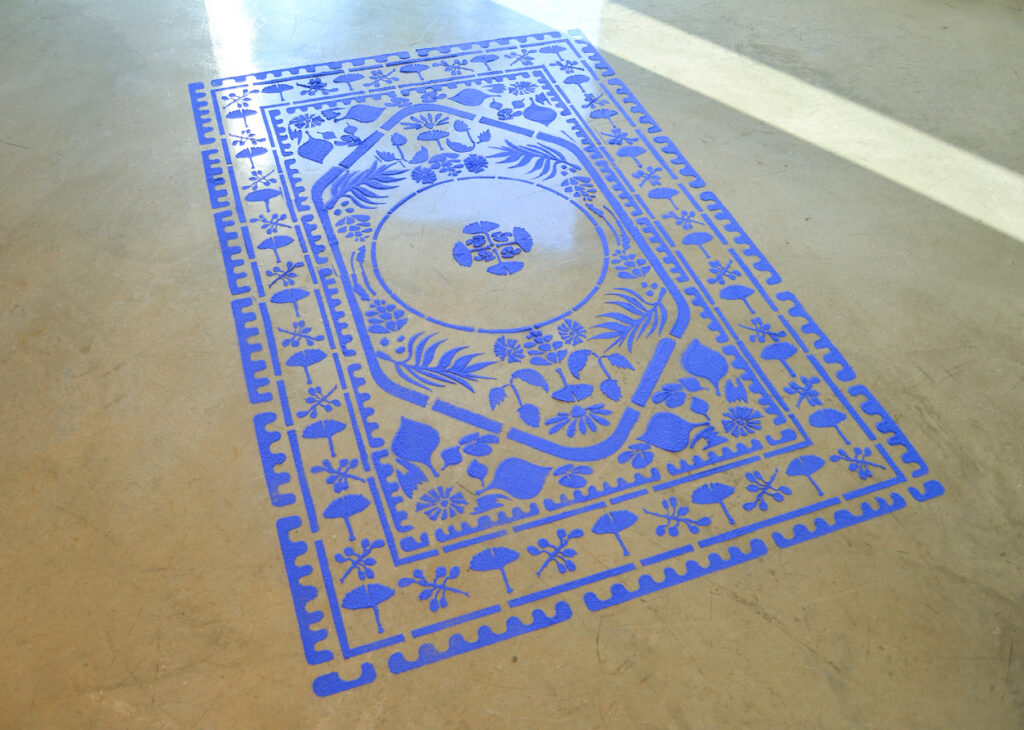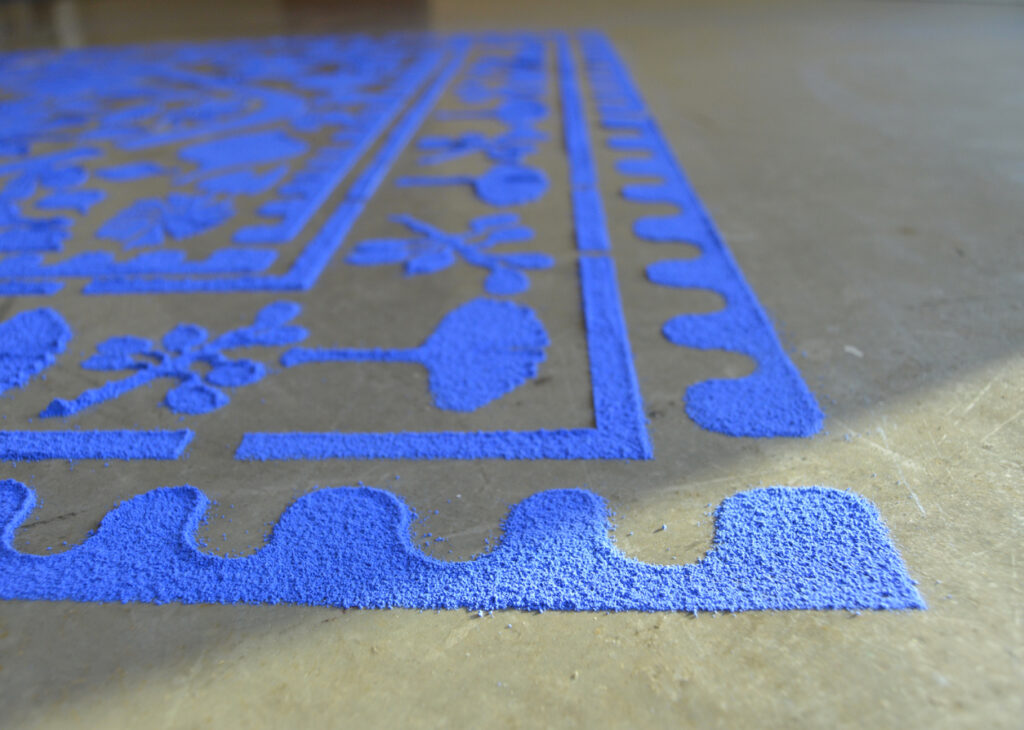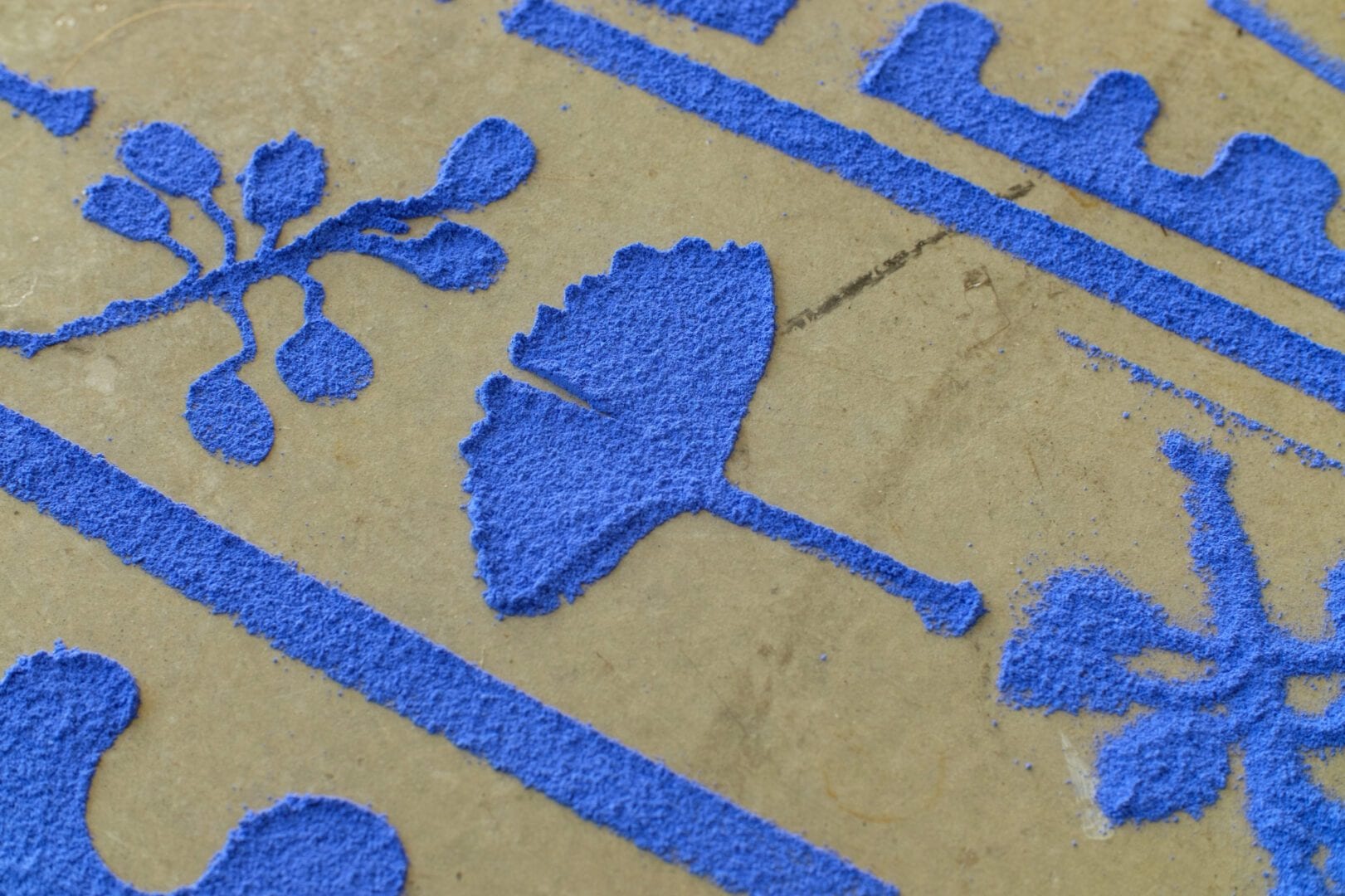
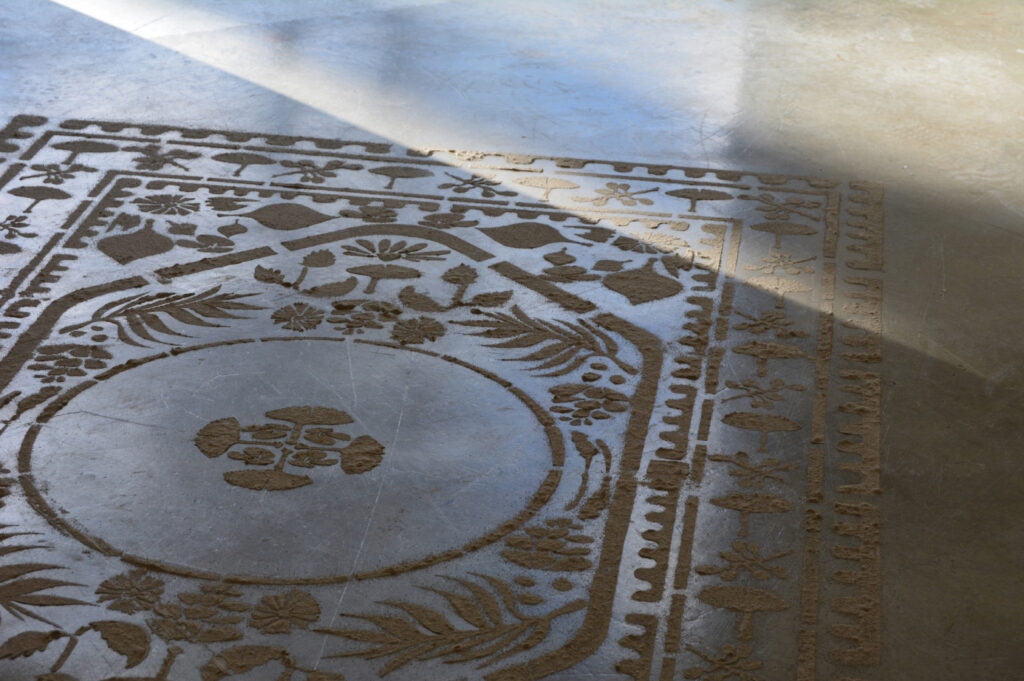
“Blue. Plant. Soil. Dust. Hope,” conceptual artist Madelaine Corbin answers, when asked about undercurrents that unify her different bodies of work. An aggregate of pigment, particles, living matter and aspiration permeate the work, asking us to question the boundaries which define things like ‘home,’ ‘value,’ ‘empathy,’ and our escalating crisis of climate change.
One example is a group of stenciled floor works. While each visually signifies a carpet, they aren’t woven, or even made of fiber. Corbin’s rugs are a purposeful dusting of matter (ash, dust, pigment), temporarily delineating a space on the floor, and representing the traditional domestic object. As we encounter them, we become acutely aware of our bodies in space and the potential effects of our movements. Excessive sway of an arm or skirt might stir a wind great enough to alter the work. A misstep could be devastating.
Surprisingly, Corbin is delighted by these unforeseen calamities. For this artist, the work lies in the ‘happening.’ Installation, deinstallation, even accidental rupture, are active, living moments that more accurately represent her concepts than do their periods of stasis on a gallery floor. A goal in the work is often to engage nature – but nature as collaborator, rather than subject. No matter how deliberate these floor offerings might be, their passive state is only a fragment of the idea.
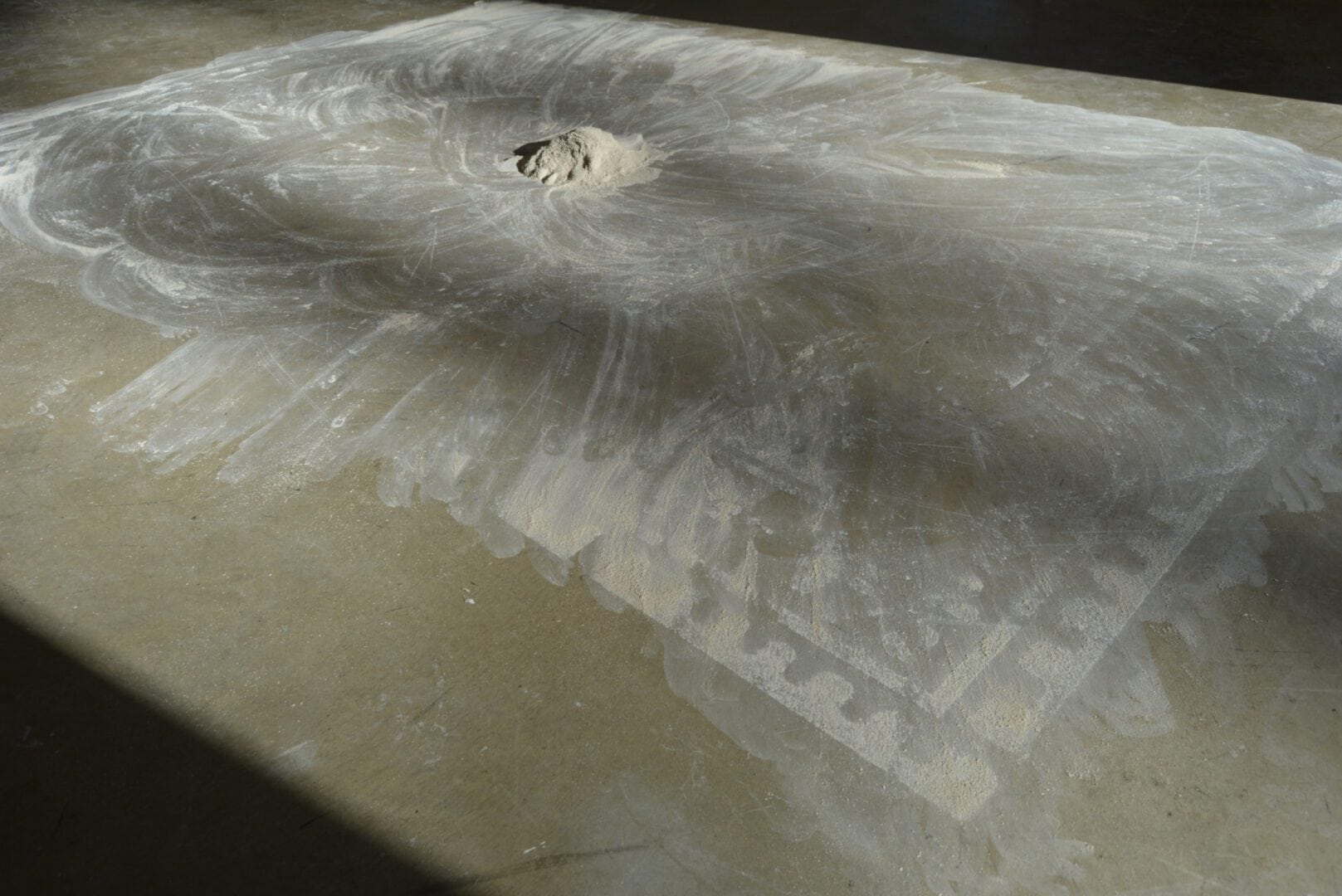
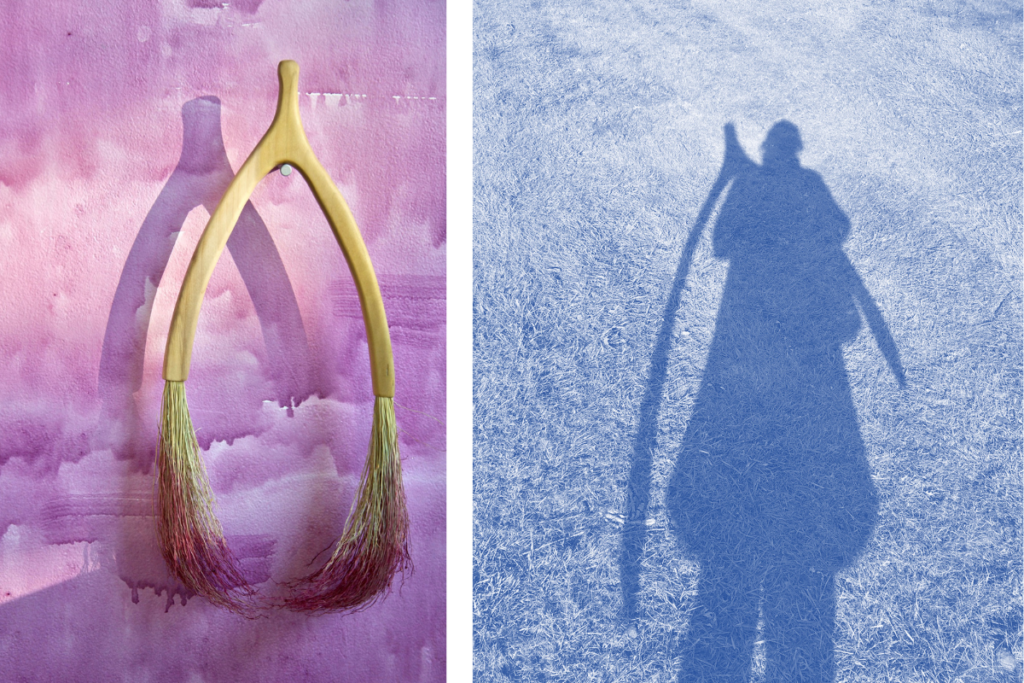
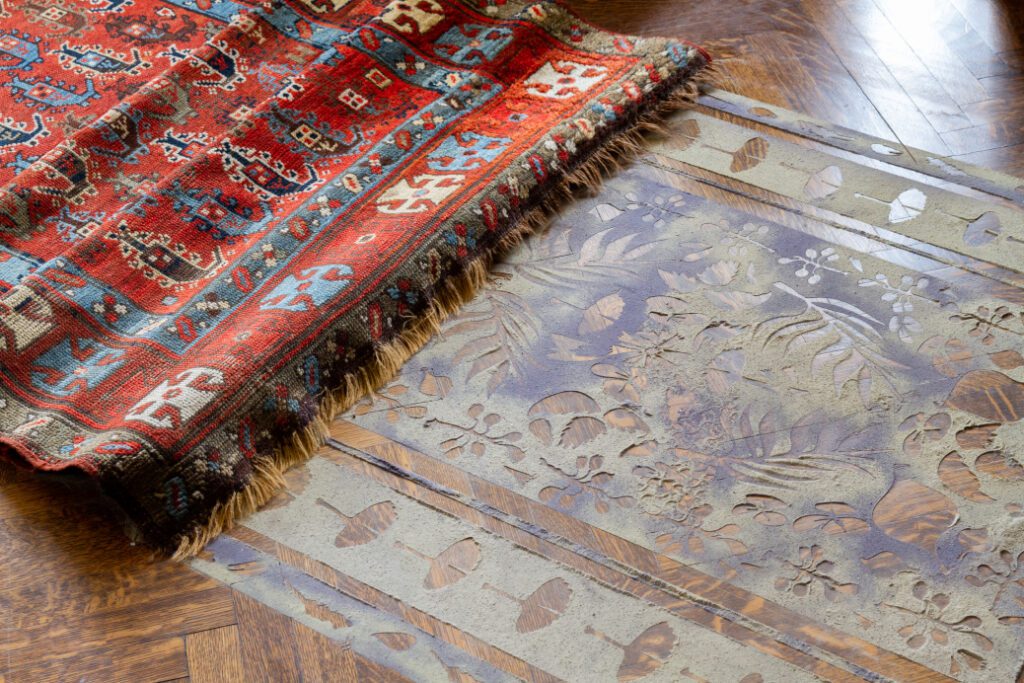
THE SOIL IS ONE OF THE FIVE GREAT CARBON POOLS ON THE PLANET. THE PLANETARY EBB AND FLOW AMONG THESE POOLS OVER SHORT AND LONG PERIODS OF TIME FORMS THE ESSENCE OF THE NATURAL CARBON CYCLE.
It was a dear friend’s farm and home, lost to the California Paradise fire in 2018, that inspired Corbin’s first ‘rug.’ The pattern on the gallery floor composed entirely of dusted hardwood ash, A Lost Garden and Geographic Limit (Paradise) 2018 refers to traditional Iranian Garden of Paradise carpets. Woven oases of plants and rivers, growing together in harmony. Corbin’s gesture of a rug made of ash is extremely moving, a metaphor for the fragility, and impermanence of our homespaces. Living in Detroit, far from her friend’s loss, and unable to offer assistance, Corbin felt helpless. She began to wonder about disasters endured far away from where we are. She asked,”what are the geographical limits of empathy?” At what point does this gesture of particles on the floor expand and dissipate, so as to no longer be associated with home?
Corbin’s next rug, Underdust, 2019, was made of dust collected from beneath the historic rugs of Cranbrook House, a local building with a complicated history. Dust swept under its floor coverings was preserved and remade into a new rug. Corbin reminds us that dust is part of what we try to keep at bay. The defining of our homes is understood through the barrier of what we choose to let in and what we choose to keep out, and Corbin reminds us that dust, an inevitable byproduct of the process of our decomposing interiors, is a material we seek to banish. In Underdust Corbin proposes: if dust and dirt — materials we emotionally relegate to the outdoors — become a more welcome inhabitant of our interiors (a space we generally guard so carefully), might we eventually care more deeply about the space outside our walls? Would blurring this barrier make us better stewards of our shared outdoor environment?
In a third rug, At Home in the Blue, 2019, Corbin employs blue pigment. Blue is an oft-explored concept for the artist. She notes that the acidification of our oceans is causing them to be less blue. Corbin calls the climate crisis a ‘crisis of color.’ and finding ways measuring amounts of blue or evidence of its vanishing, have featured prominently. This rug, also patterned as a utopian garden in the most brilliant of blue hues, is no less ephemeral. We are forced to consider, knowing its deinstallation is imminent, that the blue of our world may also be fleeting.
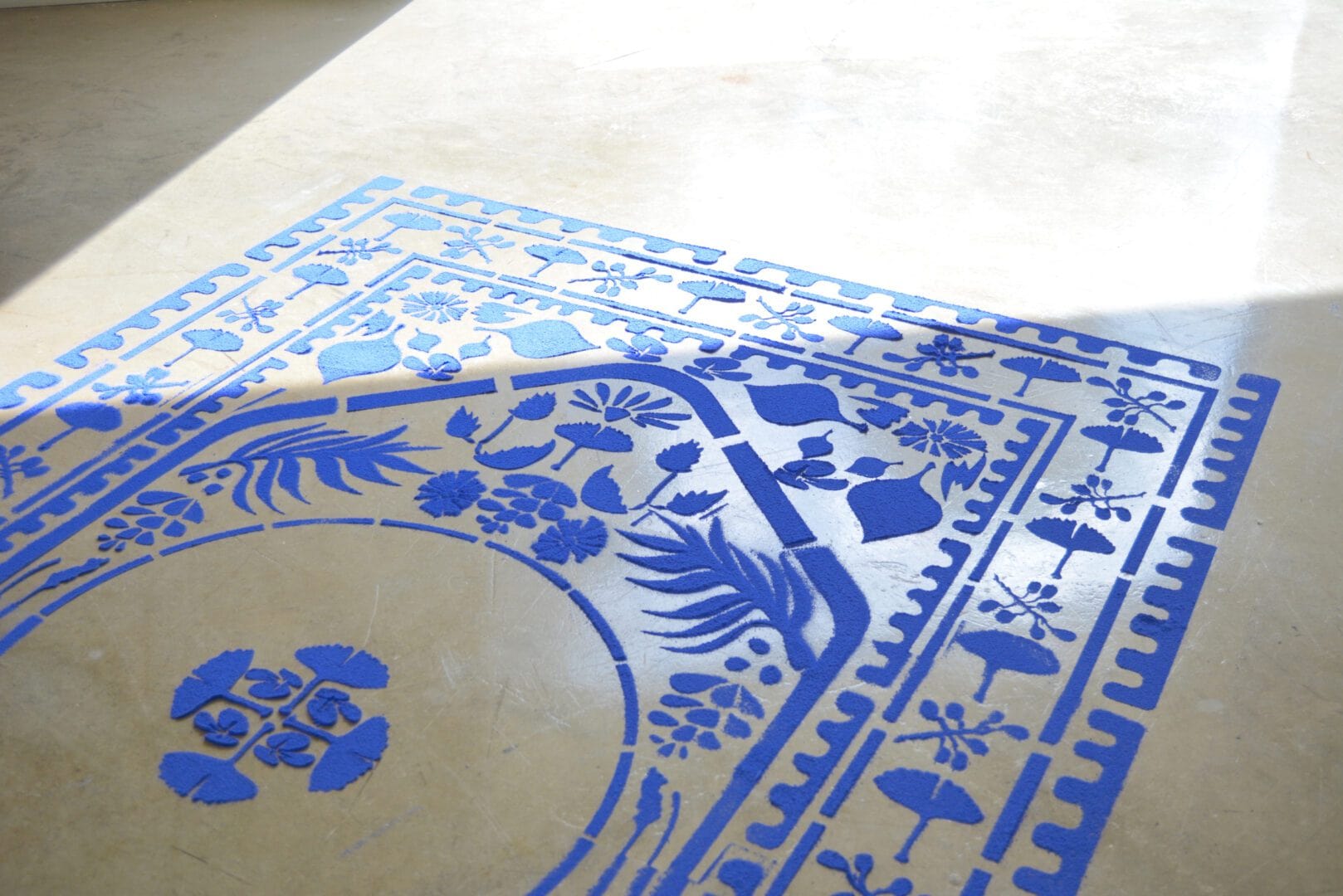
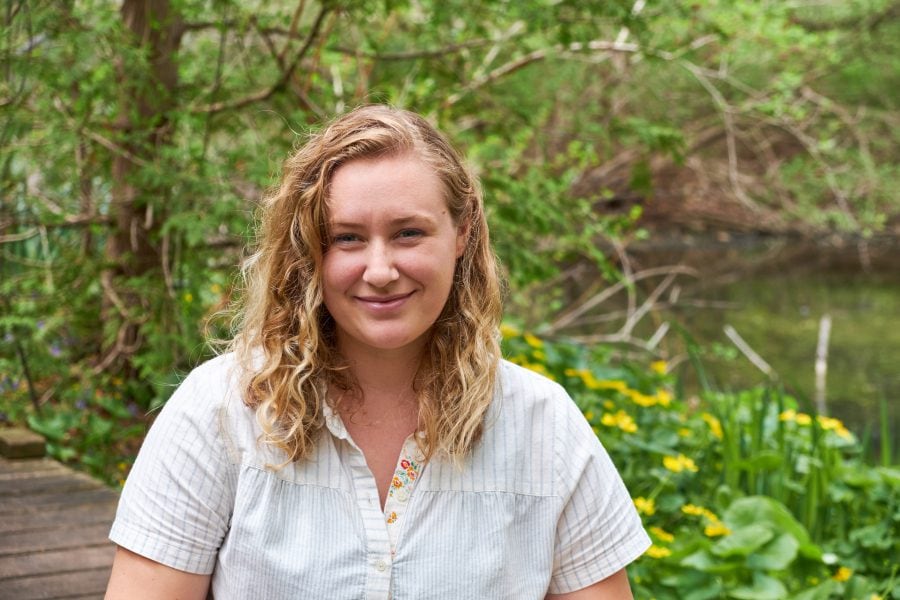
WHAT IS HOPE, BUT AN ACKNOWLEDGMENT THAT THE NOW CAN BE IMPROVED?
In an effort to acknowledge just how deeply resonant are the active moments of de-installation, Corbin sculpted a broom for the sole purpose of erasing her work from the gallery floor. She explains that she made this broom as a gift to herself. The broom is formed in the shape of a wishbone. Ironically, an actual wishbone (the fork-shaped bone that fuses the clavicles of a bird) evolved to strengthen the thorax to withstand the rigors of flight. Corbin’s wishbone broom wondrously launches an infinity of particulate into the air. The work of art, now a heap of cloudy dust in a ghosting of its previous iteration, has transformed. And with it so has our idea of its value. The power of ephemeral work resides in its temporality.
In our world of the actual, a woven rug is the product of a zillion weft threads intersecting with a warp. Corbin’s rugs, devoid of twisted fiber somehow still rest squarely on this known structure. A warp of minerals and dust, crossing a weft of loss and hope. The artist has somehow found materiality in absence. In this space we are left to contemplate what matters, what we hope for, and how we might do better. And what is hope, but an acknowledgment that the now can be improved?
To learn more about the work of Madelaine Corbin visit madelainecorbin.com

